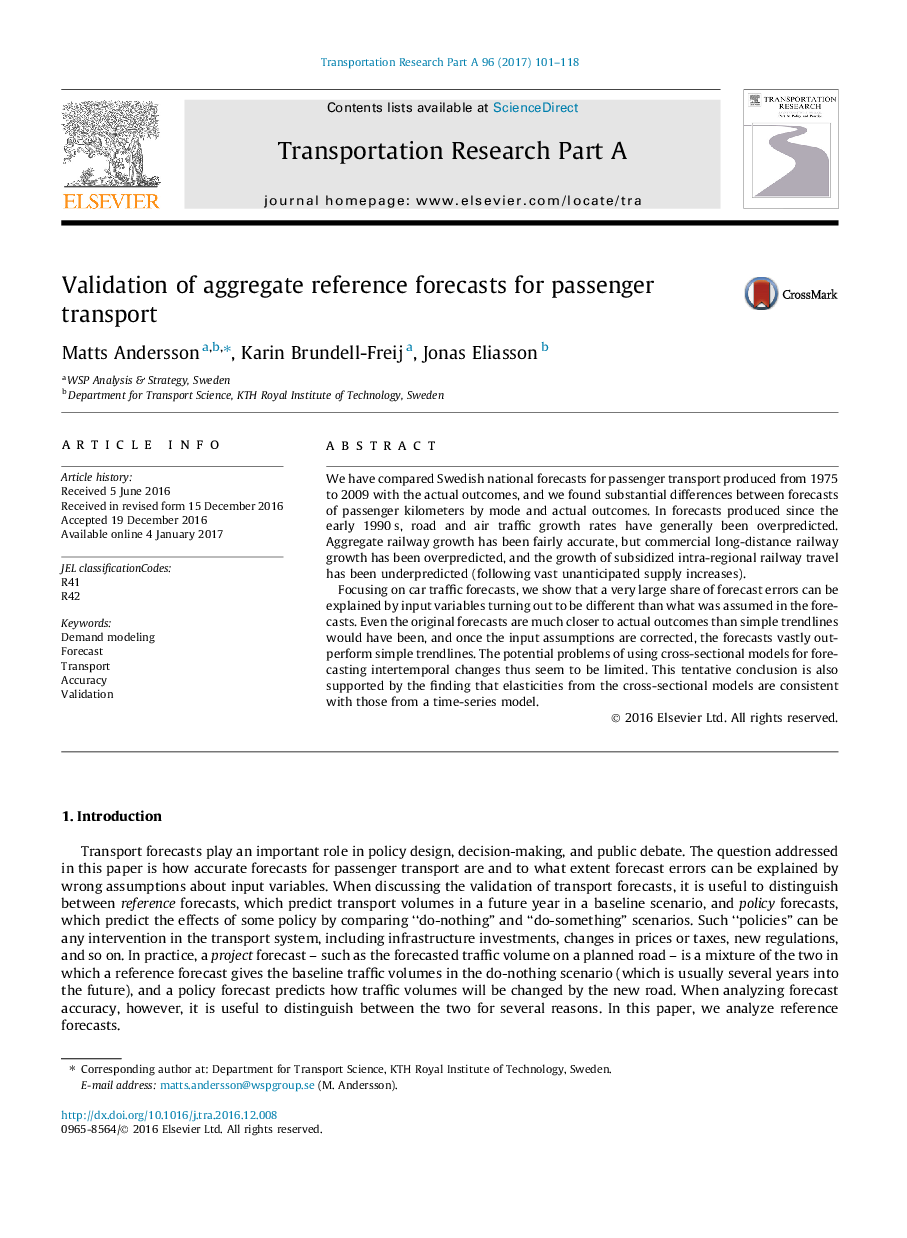| Article ID | Journal | Published Year | Pages | File Type |
|---|---|---|---|---|
| 4929130 | Transportation Research Part A: Policy and Practice | 2017 | 18 Pages |
Abstract
Focusing on car traffic forecasts, we show that a very large share of forecast errors can be explained by input variables turning out to be different than what was assumed in the forecasts. Even the original forecasts are much closer to actual outcomes than simple trendlines would have been, and once the input assumptions are corrected, the forecasts vastly outperform simple trendlines. The potential problems of using cross-sectional models for forecasting intertemporal changes thus seem to be limited. This tentative conclusion is also supported by the finding that elasticities from the cross-sectional models are consistent with those from a time-series model.
Related Topics
Physical Sciences and Engineering
Engineering
Civil and Structural Engineering
Authors
Matts Andersson, Karin Brundell-Freij, Jonas Eliasson,
